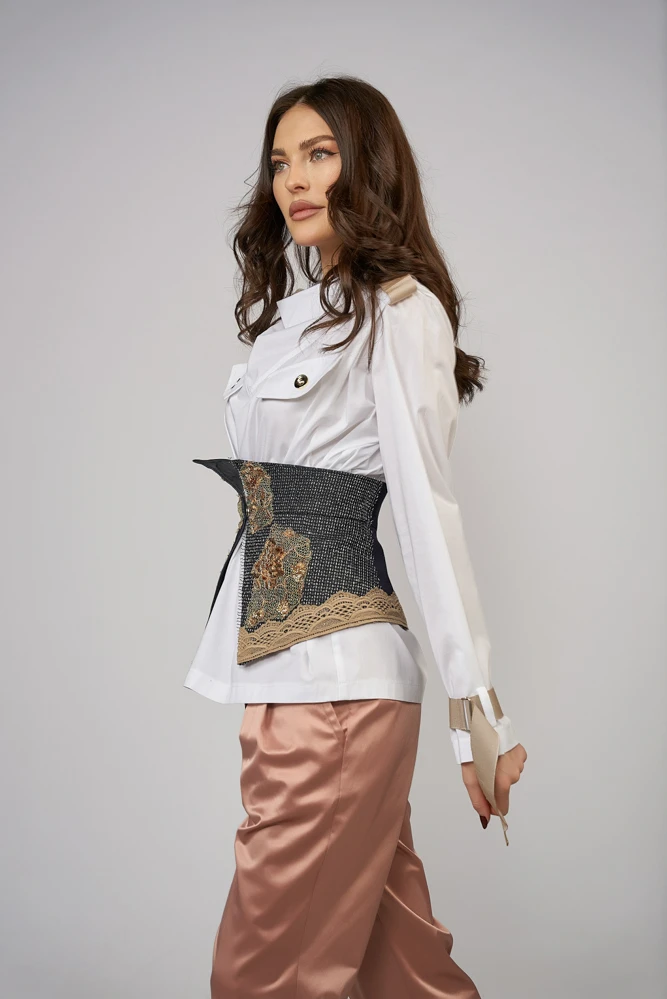Corseturi have made a remarkable comeback in recent years, captivating fashion enthusiasts and vintage lovers alike. These beautifully crafted garments are not just about aesthetics; they offer a unique way to celebrate and enhance your natural shape. Whether you’re drawn to the elegance of historical corsetry or the modern twist in today’s fashion scene, finding the right corset can transform your wardrobe and boost your confidence.
But what exactly are corseturi? And how do you navigate the vast world of styles, materials, and sizes? This guide will take you on an enlightening journey through everything you need to know about these stunning pieces. From their rich history to practical tips for choosing the right one for your body type, get ready to dive into the alluring world of corsets!
What are Corseturi?
Corseturi, commonly known as corsets, are structured garments designed to shape and support the torso. Traditionally made of sturdy fabrics like silk or cotton, they feature boning that helps create an hourglass silhouette.
These pieces have evolved significantly over time. Today’s corseturi can be found in various styles—some prioritize fashion while others focus on waist training or shapewear benefits.
The anatomy of a corset typically includes laces or hooks for adjustment, allowing wearers to customize fit and comfort levels. They serve not only as undergarments but also as statement pieces that enhance outfits.
Corseturi come with rich cultural significance too. Historically worn by women across different societies, these garments symbolize both femininity and strength throughout the ages. Now more than ever, they encourage individuals to embrace their bodies while expressing personal style.
The History and Evolution of Corseturi
Corseturi have a fascinating history that spans centuries. Initially used in the 16th century, these garments were designed to shape and support women’s bodies, creating an hourglass silhouette.
In the Victorian era, corsets became more popular and intricate, often featuring elaborate designs and laces. They symbolized femininity and social status while also sparking debates over health concerns related to tight-lacing.
As time progressed, attitudes shifted. The early 20th century saw a decline in their everyday use as women embraced more functional clothing during World War I. However, corsets never truly disappeared; they evolved into modern shapewear.
Today’s corseturi blend fashion with function. Designers experiment with materials, cuts, and styles catering to diverse tastes—ranging from classic vintage looks to contemporary chic pieces that celebrate body positivity without sacrificing comfort or style.
Types of Corseturi: From Fashion to Waist Training
Corseturi come in various styles, each serving different purposes. Fashion corsets are designed to enhance your outfit and silhouette. Often made from luxurious fabrics, they can elevate both casual and formal wear.
Waist trainers focus on reshaping the waistline over time. These are typically constructed with sturdy materials for effective compression. Many wear them during workouts for added support.
Underbust corsets sit below the bust line, allowing for versatility in styling while providing structure. They pair well with tops or dresses that highlight the waist.
Overbust corsets cover the bust area and emphasize curves beautifully. Perfect for creating an hourglass figure, these pieces can be stunning statement garments.
With so many options available, it’s essential to choose a style that aligns with your goals—be it fashion-forward looks or body sculpting techniques. Each type has its unique charm and purpose within the world of corsetry.
How to Measure for the Perfect Fit
Measuring for the perfect corset fit is essential. Start by gathering a soft measuring tape and a mirror.
Begin with your bust measurement. Wrap the tape around the fullest part of your breasts, ensuring it’s parallel to the floor. This will help you find styles that support without constriction.
Next, measure your waist at its narrowest point. Don’t suck in; just breathe normally to get an accurate size.
For hip measurements, wrap the tape around the widest part of your hips while standing straight.
Write down these numbers for reference when shopping or ordering online.
Always remember that different brands may have varying sizing charts, so check those before making any decisions. A well-fitted corset should feel snug but not painful—your comfort matters most during wear!
Tips for Choosing the Right Style for Your Body Type
Choosing the right corset style is essential for comfort and confidence. Start by identifying your body shape. Pear, apple, hourglass—each silhouette has styles that flatter.
For hourglass figures, go for a traditional underbust corset to accentuate curves without losing support. If you’re more of a pear shape, consider a longer line corset that smooths out the hips while drawing attention to the waist.
Apple shapes benefit from designs with wider straps or bust-enhancing features. This offers support and creates balance across your figure.
Don’t shy away from experimenting with different fabrics and colors. A lace overlay can add elegance while cotton options provide breathability for everyday wear.
Always remember to prioritize comfort alongside aesthetics; after all, feeling good in what you wear is just as important as looking good.
Maintenance and Care for Your Corset
Taking care of your corset is essential for its longevity and performance. Always follow the manufacturer’s instructions, as different materials may require varying levels of care.
After each wear, air it out to prevent odors. Avoid tossing it in the wash; hand washing is often recommended. Use cool water with a gentle detergent to clean delicate fabrics.
When storing your corset, lay it flat or hang it up without any heavy items resting on top. This helps maintain its shape and prevents creasing.
Check the laces and seams regularly for any signs of wear or damage. Addressing small issues early can save you from larger repairs later on.
Consider investing in a protective garment bag if you have multiple pieces. This keeps dust off while allowing breathability—an important factor for maintaining fabric quality over time.
Conclusion: Embracing Your Unique Shape with Corseturi
Embracing your unique shape with corseturi is all about celebrating individuality. These garments are not just pieces of clothing; they are tools for self-expression and empowerment. Whether you’re drawn to the historical allure or modern fashion-forward designs, finding the right corset can accentuate your figure beautifully.
Remember that every body is different. What works for one person may not work for another. Experimenting with styles, materials, and fits will help you discover what makes you feel confident and comfortable.
Taking care of your corset ensures it remains a cherished part of your wardrobe for years to come. With proper maintenance, these pieces can serve as timeless staples in any collection.
Wearing a corset should make you feel good—inside and out. Embrace the journey of discovering what enhances your natural beauty while enjoying all that this versatile garment has to offer.










